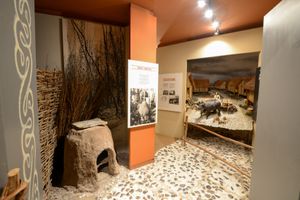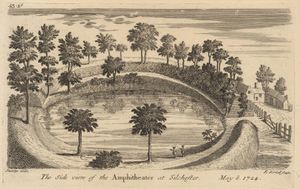The final part of a nine part series of articles from Mark Barden, our Community Cultural Experience Manager here at Hampshire Cultural Trust, 'digging the dirt' on all things archaeology.
Episode 9: The Never Ending Story
Once the excavation and post-excavation work has been completed, the resulting primary archive of artefacts, records, drawings, photographs and reports are deposited with the relevant museum. For Winchester District and Hampshire County those archives are managed by Hampshire Cultural Trust.
Keeping track.
Artefacts are given an accession number, unique to that site or object, and entered onto a database. This allows objects to be easily located and records their history within the collection.
Taking the Lankhills Roman cemetery site as an example, WINCM:AY 21 is the unique accession number for the excavations, WINCM is the museum identifier for Winchester City Museums and AY is the prefix used for archaeology.
There are over 200,000 archaeological objects recorded on the combined Winchester and Hampshire database. Combined with bulk finds the figure is in excess of a million.
There is always more to discover.
In many ways the end of the excavation is only the start of revealing the secrets a site holds. Conservationists, curators and specialists will be called in to clean, sample, measure, weigh and scrutinise, sometimes in microscopic detail, all the material retrieved from the site.
This process also helps curators decide how best to protect and store the objects for future generations. It has to be remembered that archaeological excavation is a destructive process. The site may no longer exist physically in the ground. It has been converted into plans, photographs, spot heights, record sheets, samples and artefacts that allow us to reconstruct it in the minutest detail.
The need to know.
Historically the completion of the post-excavation process was marked by the publication of the excavation report. Unfortunately, these reports can take decades to appear and many remain unpublished. One of the main reasons for this was the failure to factor in post excavation costs, such as publication, into excavation budgets.
Thankfully this situation has improved in recent years with museums, in partnership with organisation such as English Heritage, universities and local historical and archaeological societies, starting to address their backlog of unpublished sites. Publication of reports online has also help to drive down costs.
Once this material is publicly available it can attract additional research, become an educational resource and inspire conferences, exhibitions, popular booklets, walks, talks and tours, enhancing a sense of place and identity for local communities.
We live on an island with evidence for human activity stretching back hundreds of thousands of years. The process of revealing and understanding that past is an ongoing and never ending story.
If you have enjoyed Culture on Call and you are able to make a donation, any support you can give will help us keep people connected.



